- What’s the difference between pluots and plumcots? By the guy who wrote the book.
- ACIAR publication on village chickens, and another. Thanks, DAD-Net.
- Modeling the axolotl, the edible Mexican salamander, before it’s too late.
- Artisanal fishing data. Via.
- USDA looking to expand its fruit collection to cope with climate change. NOt the only ones, I imagine.
- Danes stamp on allotments. No, wait. Allotments on Danish stamps.
- Aussies find genetic marker for hornless cattle that will jump on barbie by themselves.
- Breeding better Artemisia annua.
- The diversity of farmer-managed aquatic systems in SE Asia.
- 15% of angiosperm speciation events are accompanied by ploidy increase. Much more in domesticated species, I bet.
No little houses on this prairie
I promised you more on the Doolittle Prairie, and here it is. But first, thanks to Candy Gardner for arranging the visit, and to Mark Widrlechner for leading the tour.
Doolittle Prairie State Preserve, near Story City in Iowa, is a small remnant of native tallgrass prairie. The 26-acre state-owned protected area supports about 220 plant species. ((You can download a prairie species dataset from Dr Brian J Wisley’s webpage. Look among his publications for: Wilsey, B.J. Martin, L.M. and H.W. Polley. 2005a. Predicting plant extinction based on species-area curves in prairie fragments with high beta richness. Conservation Biology. 19:1835-1841.)) About half of the area, the northern part, has never been ploughed or grazed, though hay was cut until the 60s. The southern part has been grazed, and the southwest corner ploughed until 1965 and then replanted with seed from the northern section. All around are fields of maize and soybean. Management is by cutting and burning, to keep down exotics, and encroaching shrubs and trees.

It’s a very evocative place. You can just imagine the deer and the buffalo roaming on it back in the day. There are still deer. Buffalo, not so much. ((Though I did see buffalo nearby.)) It’s also pretty interesting from an agrobiodiversity perspective, because it’s got quite a number of crop wild relatives for such a small place.
A couple of species of wild sunflowers, for example. This one is Helianthus rigidus:
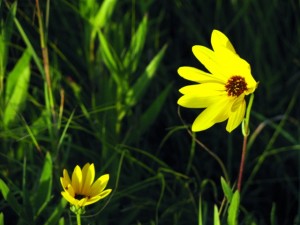
There are also native species of Allium, Elymus, Lactuca, Fragaria, Prunus, Ribes, Rubus, and Vitis:
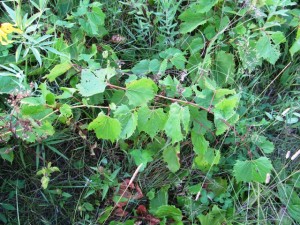
All in a beautifully colorful setting, at least at this time of the year.
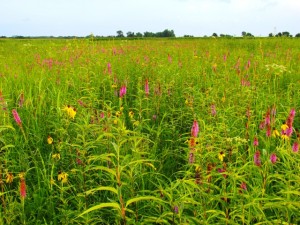
So, a bit of a CWR hotspot, in its own small way, and protected to boot. You may remember the recent global review of the role of protected areas in CWR conservation. I don’t think that CWR have been mapped in the US in the same way as has been done in Russia, however. ((They have, however, been inventoried. See Appendix A of the United States country report for the first State of the World Report. Thanks to Karen for the tip.)) Once you have geo-referenced CWR locations, you could easily mash the result up with the online map of protected areas to see which national parks and reserves contribute most to CWR conservation. Anybody out there working on this? I bet little Doolittle Prairie would be on that list.
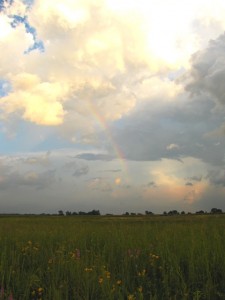
Nibbles: Seed Conference, High carotenoid bananas, DIVA-GIS, Protected area map, Pulse domestication, Food policy, Torreya rewilding
- The 2nd World Seed Conference is coming up soon.
- Orange bananas make it big in the Solomon Islands. Thanks, Lois.
- DIVA-GIS website gets a makeover. Watch out for the blog.
- Global protected areas map mashed up.
- Dorian Fuller blogs lentil and bean domestication.
- Bookforum.com does food.
- While people discuss the pros and cons of assisted migration, one group has actually gone out and done it.
Thank you, Ames!
Just back from Heartland and, before the jetlag overpowers me, I really want to thank everyone at the North Central Regional Plant Introduction Station (NC7) in Ames, Iowa for their incredible hospitality over the past week. I know this will get to them because a couple of the people working at the station told me they visit us occasionally. Grateful for that too!
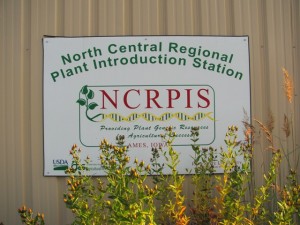
The ARS facility at Ames is the oldest of the US plant introduction stations. It’s main crop is maize, of which it has a collection of about 20,000 accessions from all over the world.
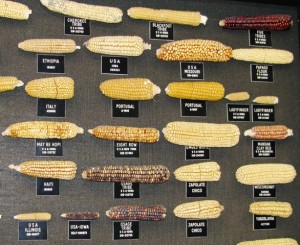
But there are also some 30,000 accessions of a bunch of other crops and wild species.

Many of the crops require careful management of pollinators during regeneration and multiplication. Fortunately, there hasn’t been any colony collapse disorder among the beehives used and maintained on the station.
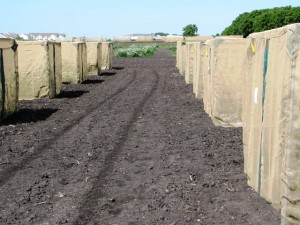
Like many of the active genebanks of the USDA National Plant Germplasm System, the one at Ames benefits from an almost symbiotic relationship with nearby Iowa State University, with some staff also having university duties and many students gaining hands-on experience in the genebank.

Also nearby is a fascinating prairie remnant, Doolittle Prairie, which houses about a dozen crop wild relatives. I’ll say a bit more about that in due course, but here’s what the place looks like at sunset.
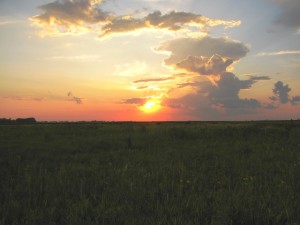
Thanks again to everyone at NC7!
Silphium rediscovered?
Luigi dug up this great article — Devil’s Dung: The World’s Smelliest Spice — which reveals more about asafoetida than you could possibly ever have wanted to know. Lord but it is strange stuff to cook with, and yet I do like what it does for a dish. But I digress. Buried in a sidebar near the bottom of the page is a claim, complete with coy question mark, that silphium, most prized spice of ancient Rome, might be alive and well. The article recounts the history of silphium, and how it was believed to have gone extinct by the 1st century CE, so I won’t repeat that here. It also mentions the possibility that Cachrys ferulacea and ancient silphium are one and the same. ((GBIF doesn’t yet know about the record from Cyrenia.)) Personally, I have no idea, and I’m not even sure I know how one would know, but I’m intrigued. Thanks Luigi.